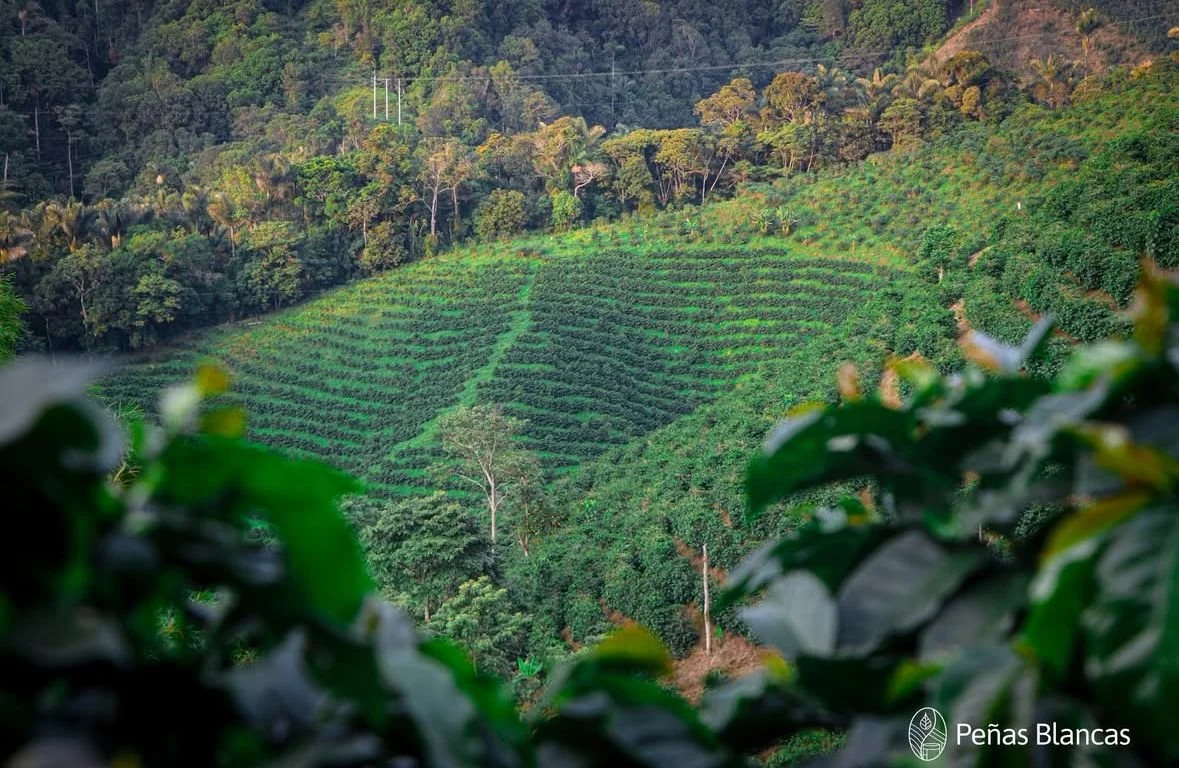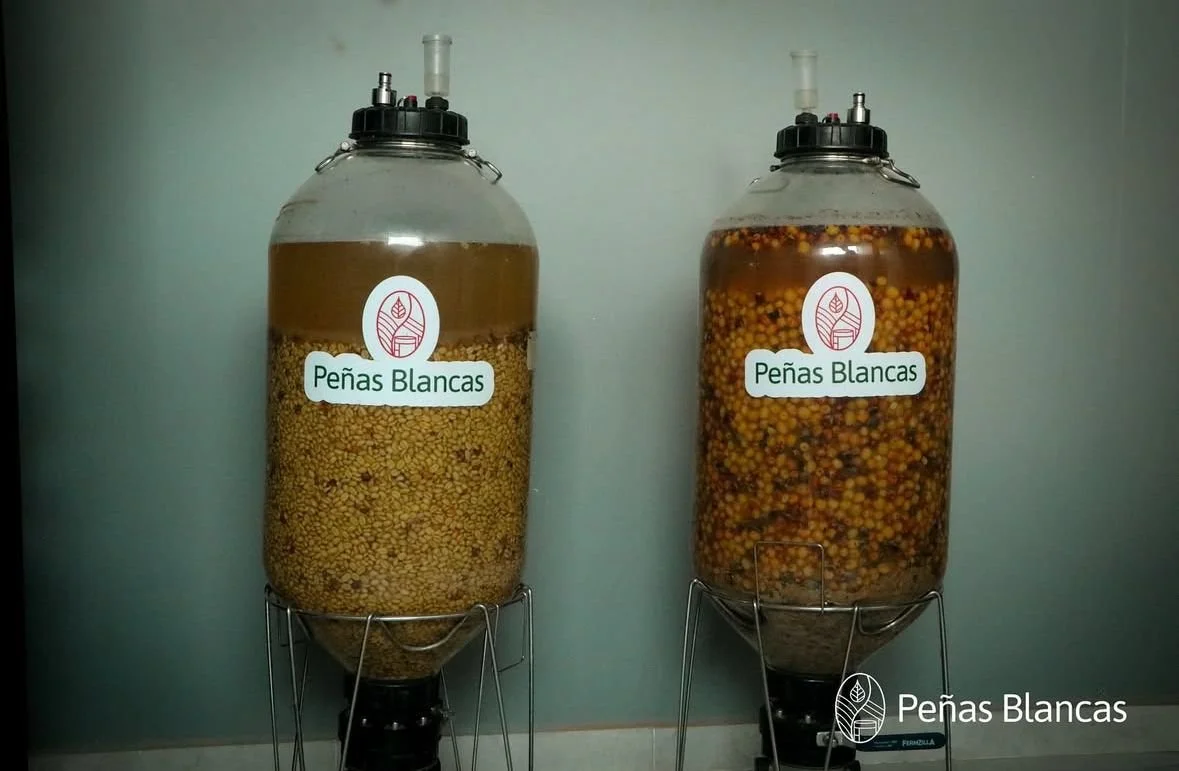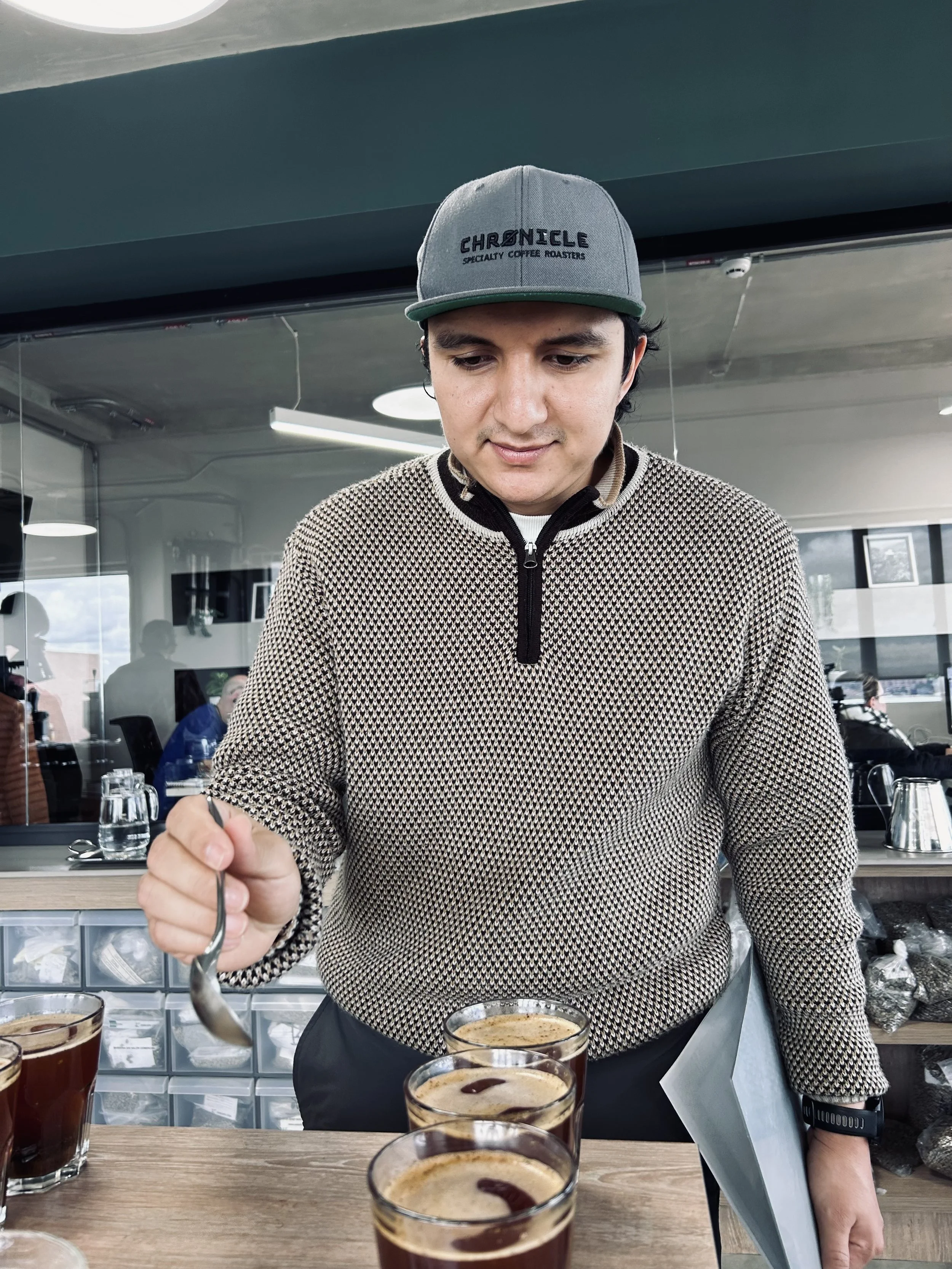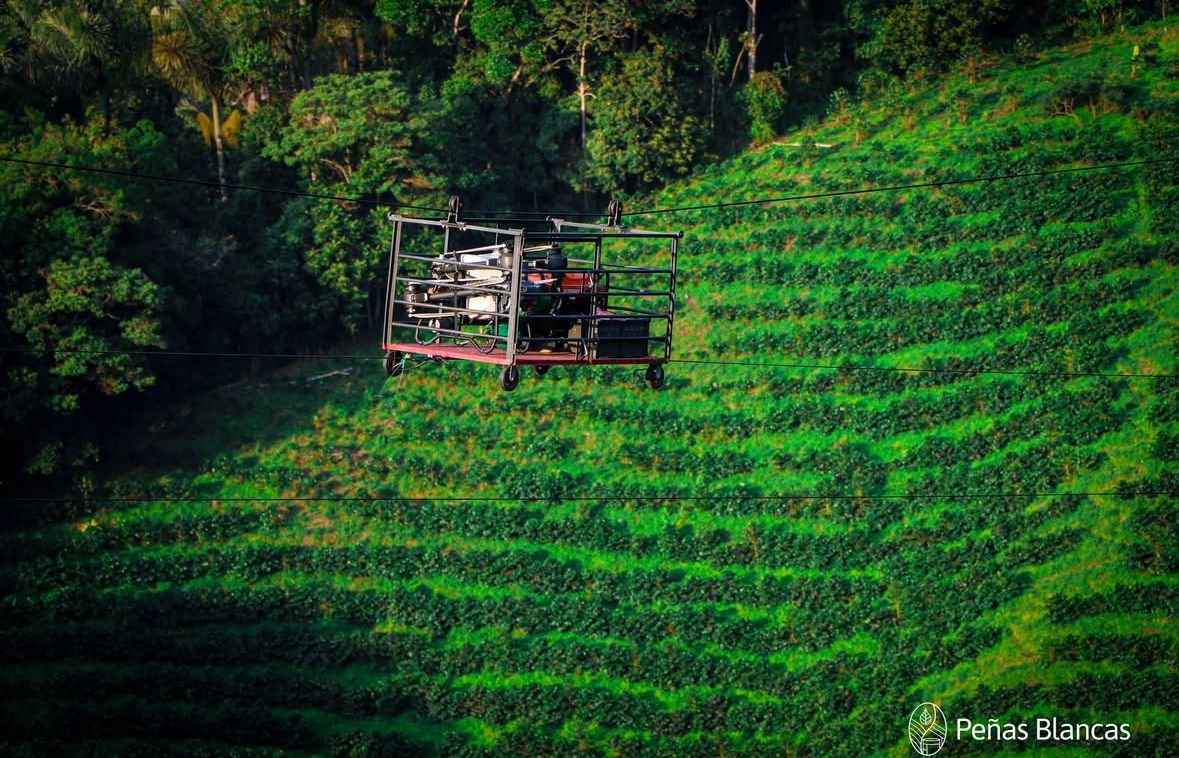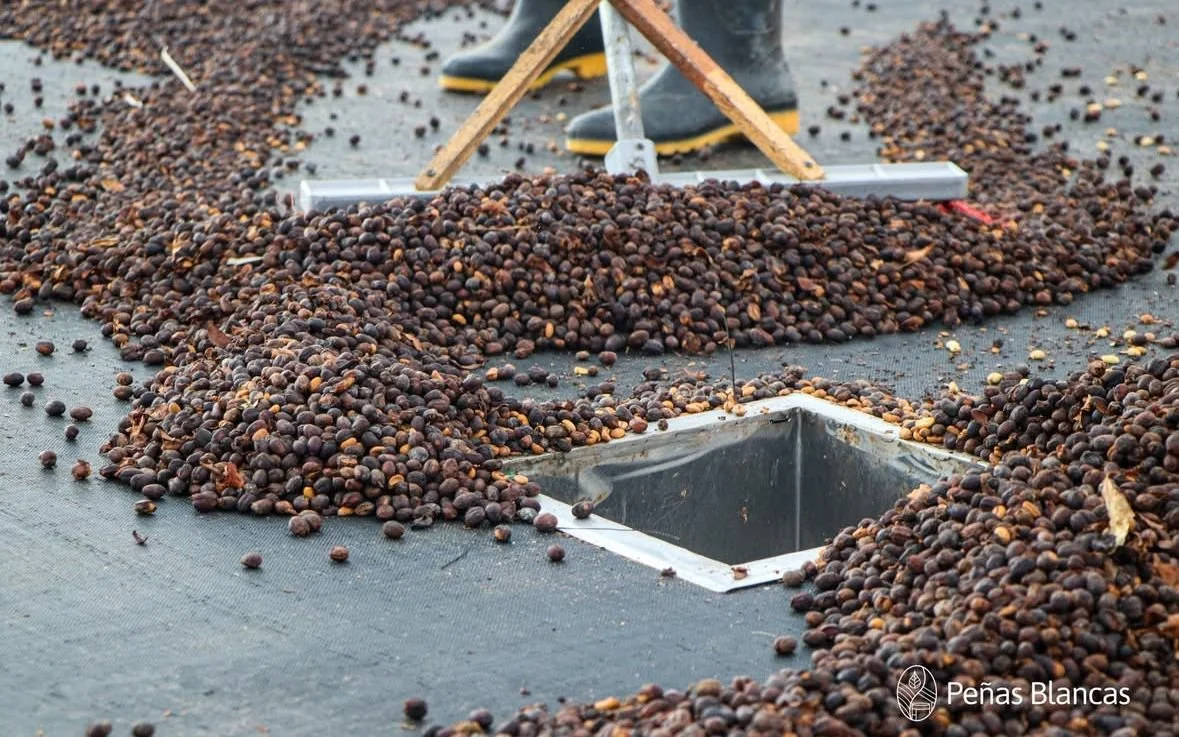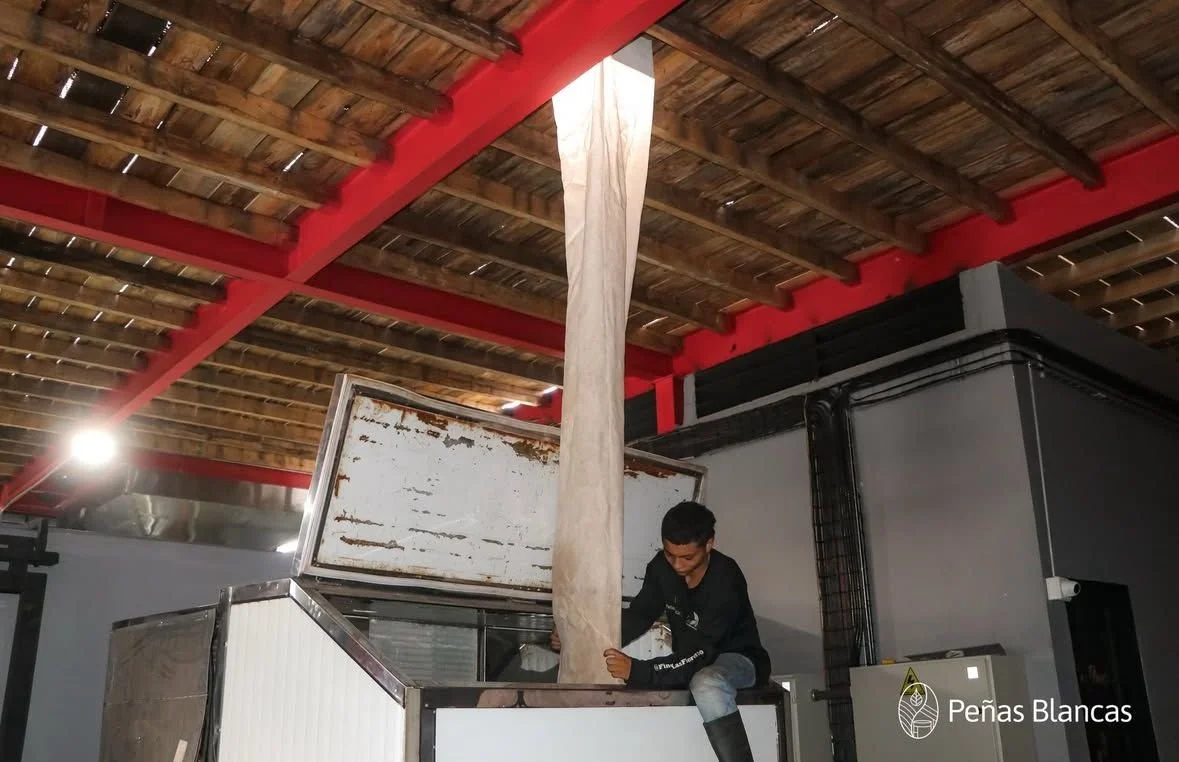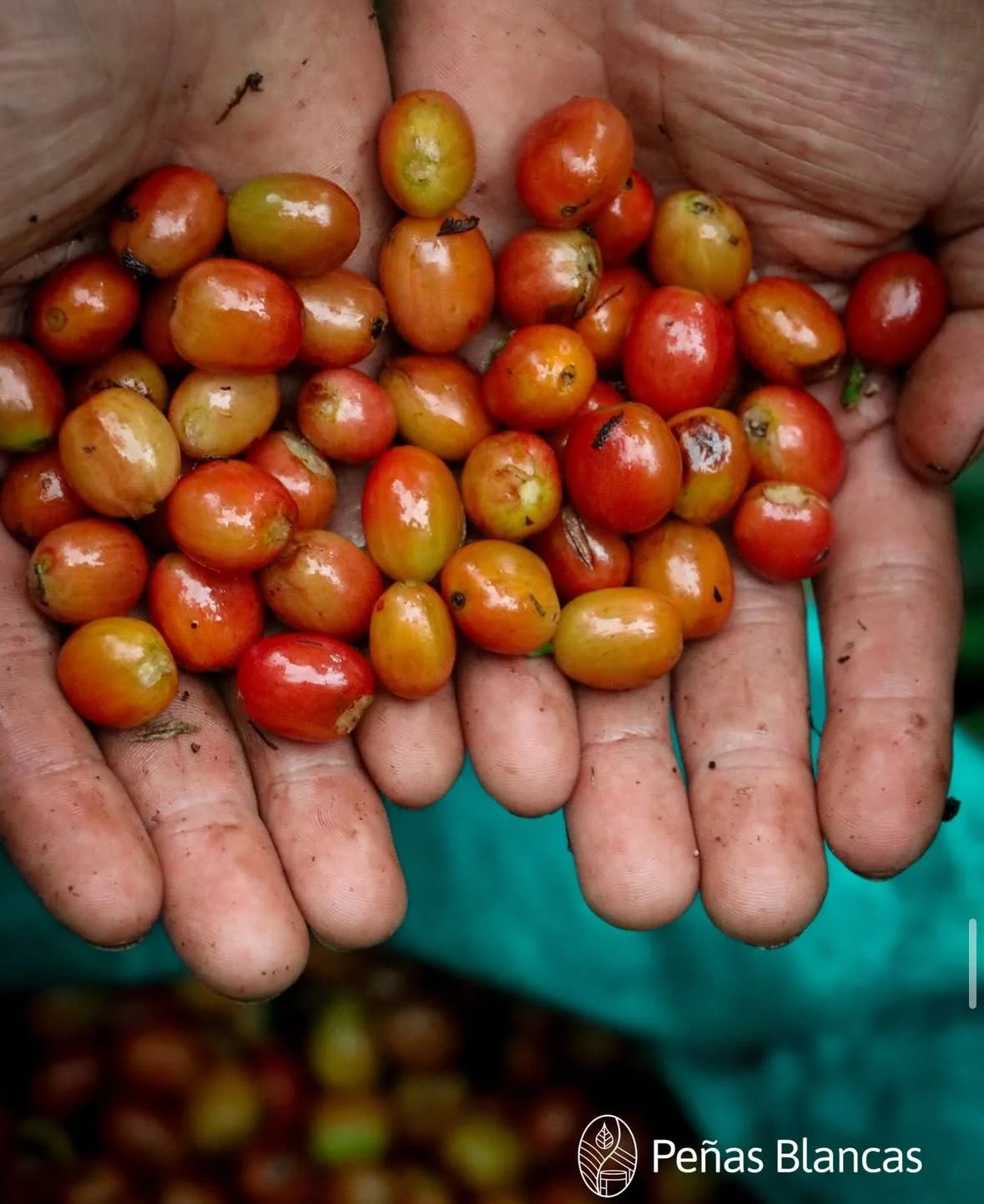Peñas Blances Estate DF Anaerobic Washed
PEÑAS BLANCAS ESTATE
Producer: Jhoan Vergara & Nestor Lasso
Farm/Mill: Peñas Blancas
Bag Size: 70 KG
Region: Bruselas, Pitalito - Huila
Altitude: 1,820 MSAL
Variety: Caturra
Process: Double Ferment Anaerobic Mossto Washed (Started as Anaerobic Mossto Natural & Finished as Washed)
Notes:
Where to even begin? We feel like a kid in a candy store when we discovered this colab for the ages. Jhoan Vergara and Nestor Lasso are two young people who represent the new generation of coffee producers in Colombia. They are risky, innovative, and they are in an endless pursuit to develop thought-provoking flavor profiles that are truly one of a kind. Coffees produced by both producers have developed a cult following among the hardest of hardcore connoisseurs and competitors in the industry. No introduction is needed, Finca Las Flores & Finca El Diviso coffees have gained global acclaim by leaving their mark at the highest degree on the world stage with numerous coffee competitors who compete in the World Barista Championships. The Peñas Blancas project is something entirely new, thought-provoking and special. Jhoan and Nestor came up with Peñas Blancas and La Planta as the brainchild to deliver great value to their home region and demonstrate to the industry of how innovation can go beyond just a fermentation tank.
PEÑAS BLANCAS
The Peñas Blancas Coffee Processing Center is more than just a processing facility—it is a social impact project designed to empower local coffee producers by providing them with access to state-of-the-art processing, technical training, and fair compensation. The center plays a crucial role in uplifting small-scale farmers and strengthening the specialty coffee ecosystem in Acevedo and Pitalito, Huila.
The Peñas Blancas Coffee Processing Center is located in Acevedo, Huila, a key region for some of the highest-quality coffees currently produced and sourced for specialty. The majority for Peñas Blancas comes from smallholder producers in Pitalito, Huila (1,850 masl), who bring their freshly harvested cherries directly to the Peñas Blancas facility. Farmers delivering coffee to Peñas Blancas are pre-selected and trained in specialized techniques and best harvesting practices by Jhoan & Nestor, ensuring that only fully ripe cherries are collected. Historically, these farmers, many of whom have been cultivating coffee for generations, have historically faced challenges such as:
Limited access to advanced processing techniques.
Inconsistent quality control due to on-farm processing constraints.
Limited market access and price volatility.
By delivering their coffee cherries to Peñas Blancas, these producers benefit from centralized processing, ensuring higher quality and consistency while allowing them to focus on farm management and coffee cultivation.
Social & Community Impact of Peñas Blancas
Access to Modern Coffee Processing & Infrastructure
Peñas Blancas provides free access to advanced post-harvest technology, including:
Controlled fermentation tanks and stainless-steel dehumidifiers to improve quality and consistency.
Specialized fermentation protocols that enhance coffee flavor complexity.
GrainPro storage facilities to preserve coffee quality before export.
For many small producers, these resources would be otherwise unaffordable, meaning Peñas Blancas directly improves the value and marketability of their coffee.
Economic Empowerment & Fair Compensation
The facility follows a transparent pricing model, ensuring that farmers receive higher premiums for their high-quality lots.
Producers avoid market volatility by selling their cherries directly to Peñas Blancas instead of relying on traditional intermediaries.
This economic stability allows farmers to reinvest in their farms, improving productivity and sustainability.
Training & Knowledge Transfer
Peñas Blancas hosts workshops and training sessions on best practices in harvesting, fermentation, and drying.
Farmers learn how specialty coffee processing impacts cup quality, giving them the tools to produce higher-value coffee.
The center fosters collaboration among producers, agronomists, and industry professionals to share innovations in coffee production.
Technical Information - Processing & post harvest
This is a unique process when it comes to hybrid washed coffees or maybe better identified as a double ferment anaerobic washed coffee. Basically the post harvest fermentation is started off as a double anaerobic natural and finished as a washed coffee. Each processing step is meticulously documented, ensuring that quality standards are met and traceability is maintained throughout the production cycle.
Upon arrival to the Peñas Blancas Coffee Processing Center, the cherries go through the following process:
Initial flotation & sorting: To remove underripe, overripe, and defective cherries.
Manual selection: Further refining the lot to include only perfectly ripe cherries.
Pre-processing registration: Each lot is recorded with producer details, farm location, and batch specifications for full lot traceability.
The process begins with a collection of ripe Caturra cherries that are received from the intake facility. In initial fermentation, the cherries are collected for oxidation for 48 hours at an average room temperature of 25°C. The next step, the cherries undergo an anaerobic fermentation in sealed fermentation barrels for 20 hours at an average temperature of 16 - 18°C. Following this phase, the coffee is transferred to separate oxidation tanks to sit for 28 hours where the coffee will reach temperatures of 36°C. Following the oxidation phase, the coffee once again will undergo a second anaerobic phase but this time with added microbial mossto that was collected from the leached cherries from the previous anaerobic fermentation cycle for 18 hours and will be controlled to ferment at 16 - 20°C.
Following the second anaerobic phase, the cherry is depulped removing the bean from the fruit and soaked in tanks with mossto for 18 hours in 45°C water. Following the soaking, the coffee goes directly to canopy covered solar drying beds for 18 - 24 days. It is routinely raked and rotated to assure even exposure and drying. The final phase of drying, the coffee is placed in sealed grainpro bags for an additional 15 days. Solar dryers are an alternative form of sun drying that combines the best of both worlds when it comes to drying. It provides solar energy to dry the coffee while protecting coffees from any direct sunlight or elements brought on by wet weather, especially trying to dry coffee during La Niña. Greenhouse dryers differ from sun drying methods such as patio and raised bed in that they induce a greenhouse effect by trapping air internally and warming it by solar radiation.
CATURRA VARIETY
Caturra is a natural mutation of the Bourbon variety. It was discovered on a plantation in the state of Minas Gerais in Brazil sometime between 1915 and 1918. Caturra has a single-gene mutation that causes the plant to grow smaller (called Dwarf/Compactism). Its name derives from the Guarani word meaning "small." It is also called "Nanico." After Caturra’s discovery, selections were made by the Instituto Agronomico (IAC) of Sao Paulo State in Campinas, Brazil, starting in 1937. Breeders were interested in Caturra’s small size, which allows plants to be placed closer together, and its closely spaced secondary branches, which enable it to produce more fruit in the same space. The selection process for Caturra was called mass selection, meaning that a group of individuals is selected based on their superior performance, seed from these plants is bulked to form a new generation, and then the process is repeated. The variety was never officially released in Brazil, but has become common in Central America. It was introduced in Guatemala in the 1940s, but widespread commercial adoption didn’t happen for another three decades. From Guatemala, it was introduced to Costa Rica, Honduras, and Panama. For decades, it was one of the most economically important coffees in Central America, to the extent that it was often used (and sometimes still is) as a “benchmark” against which new cultivars are tested. In Colombia, Caturra was thought to represent nearly half of the country’s production until a government-sponsored program beginning in 2008 incentivized renovation of over three billion coffee trees with the leaf-rust-resistant Castillo variety (which has Caturra parentage). Caturra led in part to the intensification of coffee cultivation through higher-density planting, often in full sun, that took place in the region in the second half of the 20th century. Caturra is also known for being one of the parents of the so-called “Catimor” family of cultivars. Various lines of the coffee-leaf-rust-resistant Timor Hybrid were crossed with Caturra to produce a Dwarf/Compact plant with rust resistance. Examples of Catimor varieties include: Costa Rica 95, Catisic, Lempira, and IHCAFE 90.For more information on the history of the Catimor group, see T8667.
Export & Final Delivery
After milling, the green coffee is packed and stored before export. Peñas Blancas works with export partners and direct buyers to ensure that the coffee reaches specialty markets, where it is appreciated for its unique profile. The facility emphasizes direct trade relationships, transparency in pricing, and fair compensation for farmers.
Traceability & Ethical Sourcing
Peñas Blancas' centralized processing model ensures full traceability from farm to export. The facility promotes fair pricing by giving farmers direct access to high-value specialty markets and by guaranteeing premiums over local prices. All data regarding processing conditions, fermentation, drying times, and producer details are all recorded & documented, allowing buyers to trace the coffee’s journey with high accuracy.
REGIONAL INFORMATION
Huila, one of the most vital coffee growing regions in Colombia due to its economy, agricultural and commercial production of coffee. Huila is located in the southern portion of the country where the Central and Eastern ranges of the Andes mountains converge. Coffee being the product with the highest national production, especially of arabica that is exported to The United States, Russia, Japan and various countries around Europe. Huila’s coffee farms are predominately smallholder owned and over the past ten years have made consorted efforts to produce specialty coffee that reveals the full character of the region’s terroir. The Peñas Blancas Coffee Processing Center and its network of producers are part of a rich cultural and historical coffee heritage in Huila, Colombia. The region is not only known for its exceptional coffee quality but also for its deep-rooted traditions, innovative post-harvest techniques, and commitment to sustainability. The producers associated with Peñas Blancas are at the forefront of a new generation of Colombian coffee growers who combine traditional knowledge with modern processing techniques to elevate their coffee to global specialty markets. The land where Peñas Blancas operates is historically tied to indigenous and campesino coffee-growing traditions, where sustainable farming practices have been passed down through generations. Many farmers still respect traditional lunar cycles and biodiversity-friendly practices when planting and harvesting coffee.
Peñas Blancas has positioned itself as a hub for experimental coffee processing, implementing cutting-edge fermentation techniques and controlled drying methods to produce consistently high-quality coffee. Peñas Blancas is deeply committed to environmental conservation and sustainable farming practices, ensuring that coffee production not only benefits farmers but also protects the local ecosystem.
Peñas Blancas reduces water consumption by reusing lixiviates in fermentation, a practice that enhances flavor while minimizing waste. Unlike traditional washed processing, this natural method eliminates the need for excessive water usage, making it more environmentally friendly. The surrounding region is home to a diverse range of flora and fauna, including native bird species that thrive in coffee farms with sustainable canopy management. Most importantly, producers are encouraged to incorporate organic and regenerative farming techniques, reducing reliance on synthetic inputs. The use of stainless steel fermentation tanks and enclosed drying systems helps reduce contamination risks and energy waste.

